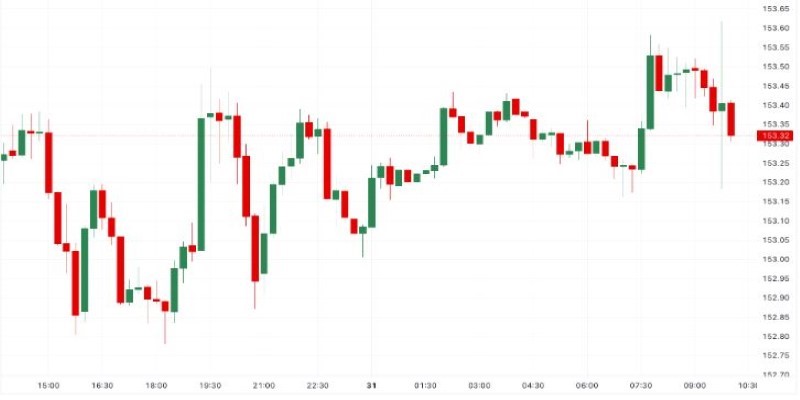With Inflation Pressures Rising, BOJ Eyes Future Rate Hikes
Nov 11, 2024 By Elva Flynn
The Bank of Japan (BOJ) recently opted to keep interest rates unchanged, holding to its cautious, dovish stance even as inflationary pressures grow. This steady course aligns with BOJs focus on economic stability, yet hints at possible future rate hikes are beginning to emerge. While the BOJ has yet to adjust its path, market analysts are increasingly speculating on when a shift may occur.
It does stand out, however, against other economies that have seen aggressive inflation control measures amid global inflation and lower growth rates. This really points to the challenge that the BOJ faces balancing Japan's economic recovery with the need to control inflation, a delicate balance under close market scrutiny.
Understanding BOJ's Current Policy
One such institution that took a very unique approach to monetary policy was the Bank of Japan. Most countries in the world have hiked rates in order to curb inflation, but not Japan. Part of the reasons for this is Japan's economic structure and history in dealing with inflation: decades of deflationary forces have beset the country, and even as the nation begins to see increased inflation, it is a far cry from what it has seen elsewhere. Rates at BOJ are a little more in line with the objectives of stabilizing employment and supporting economic growth. Still, inflation and globalization could put pressure on policy adjustment.
More recently, the BOJ started yield curve control, concentrating on steady long-term interest rates and easier conditions. This policy is intended to help keep borrowing cheap and favorable for the business sector and households. However, this policy comes with its pains. Inflation has slowly accelerated due mainly to some of the most recent fuel cost increases and problems in the supply chain; thus, this may become a bit earlier than expected, and the BOJ must change its approach.
Inflation pressure and market reaction.
Increasing inflation is a new priority at the Bank of Japan because it is reassessing the effects of its lengthy low-rate policy. Last month, Japan's rate of inflation nudged even closer to the Bank of Japan's 2 per cent target, a historic accomplishment for a country once famously mired in deflation. Unlike inflation in America or Europe, which results from consumer demand, supply-side factors in Japan remain the primary driver, according to experts. For one, energy prices have started to rise, and costs have increased for imported goods as well.

As inflation persists, the BOJs commitment to low rates is under scrutiny. While BOJ officials maintain that a careful approach is necessary, expectations for future rate hikes are building. The BOJ appears to be allowing inflation to stabilize, aiming for stronger economic conditions before any drastic moves. Meanwhile, external pressures add to the complexities. The U.S. Federal Reserve's rate hikes and Europes tightening monetary stance could influence Japan's policy trajectory, especially if the yen continues to weaken or inflationary pressures remain elevated.
Market analysts and investors are closely watching the BOJ, speculating on when rate adjustments might come. Although the Bank is cautious, gradual alignment with international trends may eventually be necessary to maintain economic stability and address inflation in a balanced way.
Potential for Future Rate Hikes
With inflation holding above the target level, market analysts and economists believe that the BOJ will eventually raise interest rates, though the timeline remains unclear. BOJ Governor Kazuo Ueda has been careful in his messaging, stating that any future rate hikes would be gradual and measured, taking into account both domestic and international factors. The BOJ is not eager to shift its policy aggressively, as doing so could hinder Japans economic recovery. Instead, a gradual, data-dependent approach is likely.
One significant factor in the BOJs cautious stance is its focus on wage growth. Japans economy has historically struggled with low wage increases, and BOJ policymakers have emphasized that sustainable inflation requires sustained wage growth. While wages have shown some improvement, they remain insufficient to support a broad-based inflationary trend, which is why the BOJ is hesitant to raise rates too quickly. Achieving a balance between economic growth and inflation stability is a delicate task, and the BOJ appears committed to carefully managing this transition.
Whats Next for the Japanese Economy?
The BOJ's approach will likely continue to be one of patience, with rate hikes appearing gradually. Investors, businesses, and the public may anticipate rate adjustments as inflation and global economic factors shift, but the BOJ has signalled its intent to avoid abrupt changes. For now, the Bank's policy reflects a mix of caution and flexibility aimed at supporting the economy without stoking unnecessary volatility.

As Japan faces a unique economic landscape with low but rising inflation and modest wage growth, the BOJ's rate decisions will continue to draw attention. It remains clear that while Japan's economic conditions differ significantly from those in other developed nations, the BOJ is not immune to the global trend toward tighter monetary policies. Future BOJ meetings will be closely watched, with any sign of rate adjustments signalling a shift in Japan's longstanding approach.
The BOJ's decision to maintain current rates supports its stability goals. Yet, future rate hikes remain likely, driven by inflationary trends, modest wage growth, and global economic pressures that could shift Japan's longstanding monetary approach.
Conclusion
As inflation remains above target levels and international pressures mount, the BOJs steadfast policy may eventually give way to gradual rate hikes. For now, the Bank is committed to its patient approach, aimed at fostering economic stability without disrupting recovery. Japans unique economic situation, marked by moderate inflation and modest wage growth, sets it apart from other developed nations. However, the possibility of future rate adjustments is ever-present. With each BOJ meeting, the potential for a policy shift grows, capturing the attention of investors and economists worldwide. In the months ahead, the BOJs careful balance between stability and the potential for rate hikes will remain a focal point for Japans economy.
-
 Banking Jan 18, 2024
Banking Jan 18, 2024The Best Review Of The ACE Elite Prepaid Debit Card
The ACE Elite Prepaid Debit Card is a low-cost alternative to traditional bank accounts and credit cards, offering fee-free direct deposit, online bill pay, and access to cash at over 55,000 ACE Cash Express locations. With 24/7 customer service and security features such as zero liability protection, the card is a solid choice for those looking for a convenient and secure option. However, there are fees for some services, so it's important to be mindful of these when using the card
-
 Know-how Nov 23, 2023
Know-how Nov 23, 2023Top Credit Cards for Hassle-Free Bill Payments
Through this read, find the best credit cards to use for paying bills and get the most out of your money. Get the best deals and save money!
-
 Know-how Jan 22, 2024
Know-how Jan 22, 2024Comparing Liability Insurance and Full Coverage Insurance for Automobiles
Damages and injuries sustained by third parties are covered by liability insurance. On the other hand, comprehensive coverage insurance plans protect you from financial loss in the event of an accident as well as any damage your vehicle may do to another person's property.
-
 Mortgages Nov 08, 2023
Mortgages Nov 08, 2023Tips for Getting The Lowest Home Loan Interest Rates
Use a mortgage calculator to get an idea of how much house you can afford, as this will give you a better idea of how much you can spend each month on a mortgage. With this data, you'll be better positioned to find a mortgage with terms that suit your needs and budget. The purchase of a home is one of the largest and most significant investments anyone will ever make
